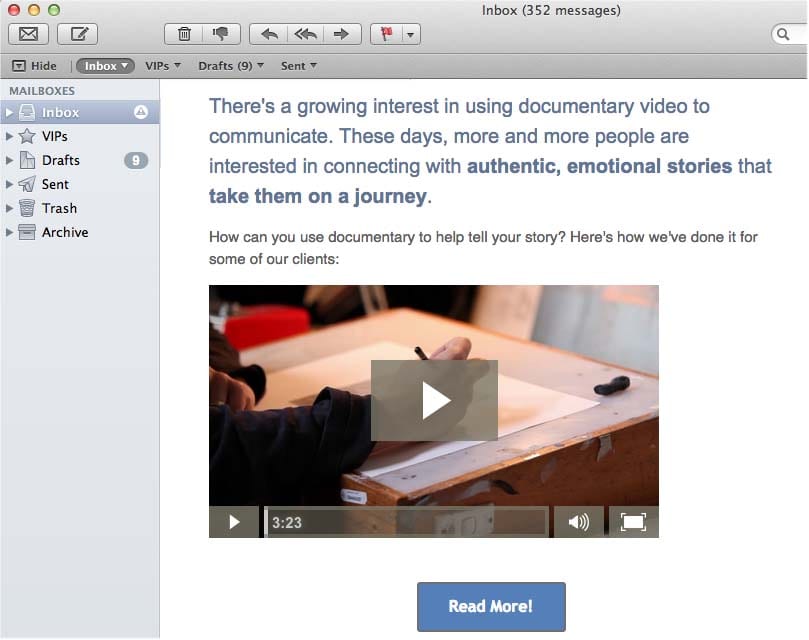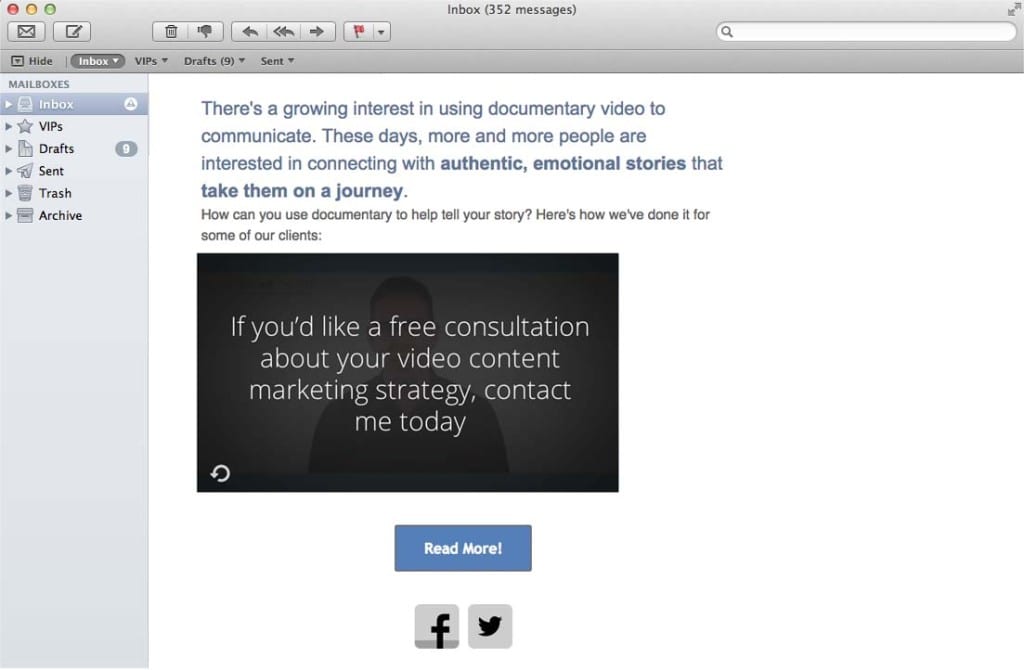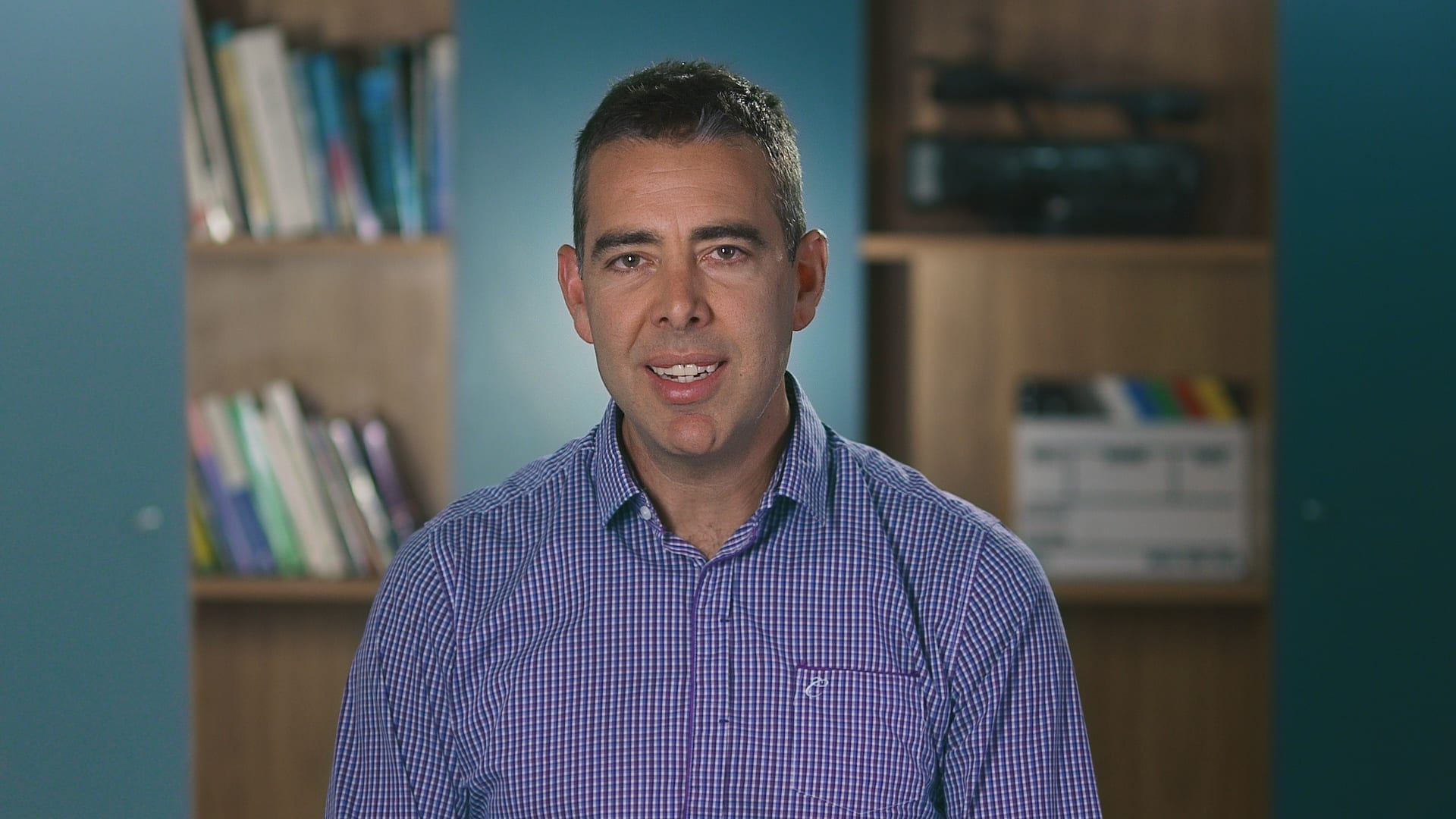What is video email marketing?
We all know email is an integral part of most marketing campaigns, but is there a way of making your emails better? Today, I’m going to discuss inserting video production into your emails. It’s a cool way to take your marketing campaign to the next level, and it’s easier than you might think.
Why Would I Put Video in an Email Campaign?
To start with, it’s a great way to stay in touch with your clients (and prospects) and remind them that you’re there. You can also use a video email campaign to educate your clients. This is a great way to establish yourself as an expert and, at the same time, showcase the services you can offer to your clients. Using email campaigns is also an effective way to drive readers back to your website, where you should already have a framework in place that gets them to connect with your product.

Can I actually just put a video in an email?
It’s technically possible, but it’s not necessarily a good idea if you want to make sure everyone can see it. Video files tend to be a bit larger than the average email attachment, so a lot of email clients will block your email to begin with. If your video email is small enough to get through, you might also find that the recipient’s client doesn’t support video (Outlook and Gmail don’t support embedded video and audio). Finally, you might find your emails heading straight to the spam folder as large embedded files often alert the filters on email clients.
So what’s the best way to do it?
As I mentioned before, driving people back to your website to watch your video has the benefit of encouraging them to engage with the rest of your website, but it also solves the problems that come with attaching a video directly.
#1: Create an image of your video
Start by using a still image from the video you want to email to your clients. Add a play button to the top of the image to make it resemble a typical video player. Now the reader can identify that they’re being prompted to watch a video by clicking on the image.

#2: Link your image to the video
Now you just need to make the image a hyperlink. This means that when somebody clicks on it they will automatically be directed to a landing page on your website to watch it.
There are arguments for and against making videos play automatically once people come into view. If the video plays automatically, then there is less for the reader to do, but at the same time, many people prefer the option to click play, as they may be in an office environment or in public.
#3: Get your audience to interact
Now, when somebody clicks the image in your email, they’ll end up on your site with a video ready to watch. The next step is to ensure that, after watching the video, they take some form of action. This is referred to as a ‘call to action’ and can range from prompting the viewer to watch more of your content or, even better, submit their details so you can contact them. Setting up a call to action is relatively simple; the location where your video is hosted will determine the specific steps you take.

How will I know if it’s working?
The final step is to monitor the results of your campaign to see if it was all worth it. You may already have access to statistics about your email campaigns through the application you use to send them. Video is much the same, but you’ll get these statistics through the service you use to host the videos. You’ll hopefully see the number of views on your video spike after you send the email ou,t and the number of people visiting your website should also rise. Analysing these statistics will tell you what kind of content does and doesn’t work with your audience, and you can adapt your next campaign accordingly.

If you want to create video content for your email marketing campaign, contact Dream Engine at our Melbourne office today.

Ryan Spanger is one of Melbourne’s most respected and sought-after video production professionals. Ryan founded Dream Engine in 2002, and specialises in helping medium to large corporates, government departments, and the non-profit sector to connect with their audience more effectively by using video.

